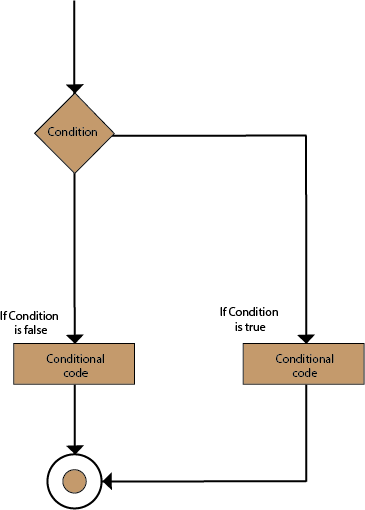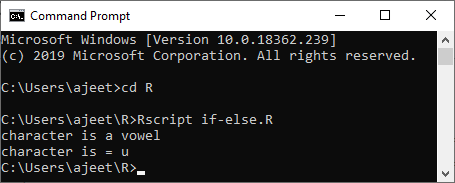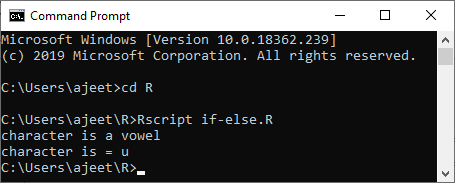📌 相关文章
- R – if-else 语句(1)
- R – if-else 语句
- if else 语句 c# (1)
- C if else语句
- IF else 语句 (1)
- R If else语句(1)
- C if else语句(1)
- C / C++ if else语句和示例
- IF..ELSE 语句示例 (1)
- C C++ if else语句和示例(1)
- C / C++ if else语句和示例
- C C++ if else语句和示例(1)
- Python中If-else语句
- Python中If-else语句(1)
- if else 语句 c# 代码示例
- if else 语句 javascript (1)
- IF..ELSE 语句 - Javascript (1)
- JavaScript 中的 if-else 语句
- JavaScript 中的 if-else 语句(1)
- IF else 语句 - Javascript (1)
- R中的IF-ELSE-IF语句(1)
- R中的IF-ELSE-IF语句
- IF..ELSE 语句 - Javascript 代码示例
- IF else 语句 - Javascript 代码示例
- if else 语句 javascript 代码示例
- IF else 语句 - 任何代码示例
- 如何在javascript中使用if else语句(1)
- if 和 else if 语句 excel (1)
- IF..ELSE 语句示例 - 无论代码示例
📜 R If else语句
📅 最后修改于: 2021-01-08 09:30:32 🧑 作者: Mango
If-else语句
在if语句中,当条件为true时,将执行内部代码。如果条件为假,则将执行if块之外的代码。
还有另一种决策语句,称为if-else语句。 if-else语句是if语句,后跟else语句。当布尔表达式为false时,将执行if-else语句else语句。简而言之,如果布尔表达式的值为真,则执行if块,否则执行else块。
R编程将任何非零和非空值都视为true,如果该值是零或null,则将它们视为false。
If-else语句的基本语法如下:
if(boolean_expression) {
// statement(s) will be executed if the boolean expression is true.
} else {
// statement(s) will be executed if the boolean expression is false.
}
流程图

例子1
# local variable definition
a<- 100
#checking boolean condition
if(a<20){
# if the condition is true then print the following
cat("a is less than 20\n")
}else{
# if the condition is false then print the following
cat("a is not less than 20\n")
}
cat("The value of a is", a)
输出:

例子2
x <- c("Hardwork","is","the","key","of","success")
if("key" %in% x) {
print("key is found")
} else {
print("key is not found")
}
输出:

例子3
a<- 100
#checking boolean condition
if(a<20){
cat("a is less than 20")
if(a%%2==0){
cat(" and an even number\n")
}
else{
cat(" but not an even number\n")
}
}else{
cat("a is greater than 20")
if(a%%2==0){
cat(" and an even number\n")
}
else{
cat(" but not an even number\n")
}
}
输出:

例子4
a<- 'u'
if(a=='a'||a=='e'||a=='i'||a=='o'||a=='u'||a=='A'||a=='E'||a=='I'||a=='O'||a=='U'){
cat("character is a vowel\n")
}else{
cat("character is a constant")
}
cat("character is =",a)
}
输出:

例子5
a<- 'u'
if(a=='a'||a=='e'||a=='i'||a=='o'||a=='u'||a=='A'||a=='E'||a=='I'||a=='O'||a=='U'){
cat("character is a vowel\n")
}else{
cat("character is a constant")
}
cat("character is =",a)
}
输出:
